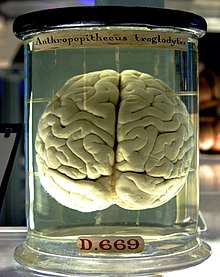| Reading and Bingo |  |  |  |  | | Consider your brain a muscle, and find opportunities to flex it. "Read, read, read," says Dr. Amir Soas of Case Western Reserve University Medical School in Cleveland. Do crossword puzzles. Play Scrabble. Start a new hobby or learn to speak a foreign language. "Anything that stimulates the brain to think." Also, watch less television, because "your brain goes into neutral," he said. | | Challenging the brain early in life is crucial to building up more "cognitive reserve" to counter brain-damaging disease, according to Dr. David Bennett of Chicago's Rush University. And, reading-habits prior to age 18 are a key predictor of later cognitive function.
A cognitive psychologist in England found that when elderly people regularly played bingo, it helped minimize their memory loss and bolster their hand-eye coordination. Bingo seemed to help players of all ages remain mentally sharp.5
|
|
|
| What's Thought-Provoking is Brain-Promoting-Research |  |  |  |  | Research on the physical results of thinking has shown that just using the brain actually increases the number of dendritic branches that interconnect brain cells. The more we think, the better our brains function – regardless of age. The renowned brain researcher Dr. Marian Diamond says, "The nervous system possesses not just a 'morning' of plasticity, but an 'afternoon' and an 'evening' as well."
Dr. Diamond found that whether we are young or old, we can continue to learn. The brain can change at any age. A dendrite grows much like a tree – from trunk to limbs to branches to twigs – in an array of ever finer complexity. | | In fact, older brains may have an advantage. She discovered that more highly developed neurons respond even better to intellectual enrichment than less developed ones do. The greatest increase in dendritic length occurred in the outermost dendritic branches, as a reaction to new information.
As she poetically describes it: "We began with a nerve cell, which starts in the embryo as just a sort of sphere. It sends its first branch out to overcome ignorance. As it reaches out, it is gathering knowledge and it is becoming creative. Then we become a little more idealistic, generous, and altruistic; but it is our six-sided dendrites which give us wisdom."
|
|
|
| Stimulating Environment Protects Brain-Study |  |  |  | Animal studies show that intellectual enrichment can even compensate for some forms of physical brain damage. For example, a mentally stimulating environment helped protect rats from the potentially damaging effects of lead poisoning.
Neuroscientists at Jefferson Medical College compared groups of rats given lead-laced water for several weeks in two different environments. Rats living in a stimulating environment showed a better ability to learn compared to the animals that were isolated. "Behaviorally, being in an enriched environment seemed to help protect their brains," says Jay Schneider, Ph.D., professor of pathology, neurology, anatomy and cell biology. | | "The magnitude of the protective effect surprised me," he says. "This might lead to an early educational intervention for at-risk populations." It suggests a way to diminish the damage that lead does to kids: by manipulating their socio-behavioral environment.6
|
source : |
http://www.fi.edu/learn/brain/exercise.html |
 |
 the brain is mainly divided to four parts,each part play a big role in our daily life.The brain is the main control for our body if without it we are useless.The brain can contain about 15-33 million neurons.Unlike humans , animal have a smaller brain than us but some animal like the chimpanzee can have a brain nearly the same size.
the brain is mainly divided to four parts,each part play a big role in our daily life.The brain is the main control for our body if without it we are useless.The brain can contain about 15-33 million neurons.Unlike humans , animal have a smaller brain than us but some animal like the chimpanzee can have a brain nearly the same size.

No comments:
Post a Comment